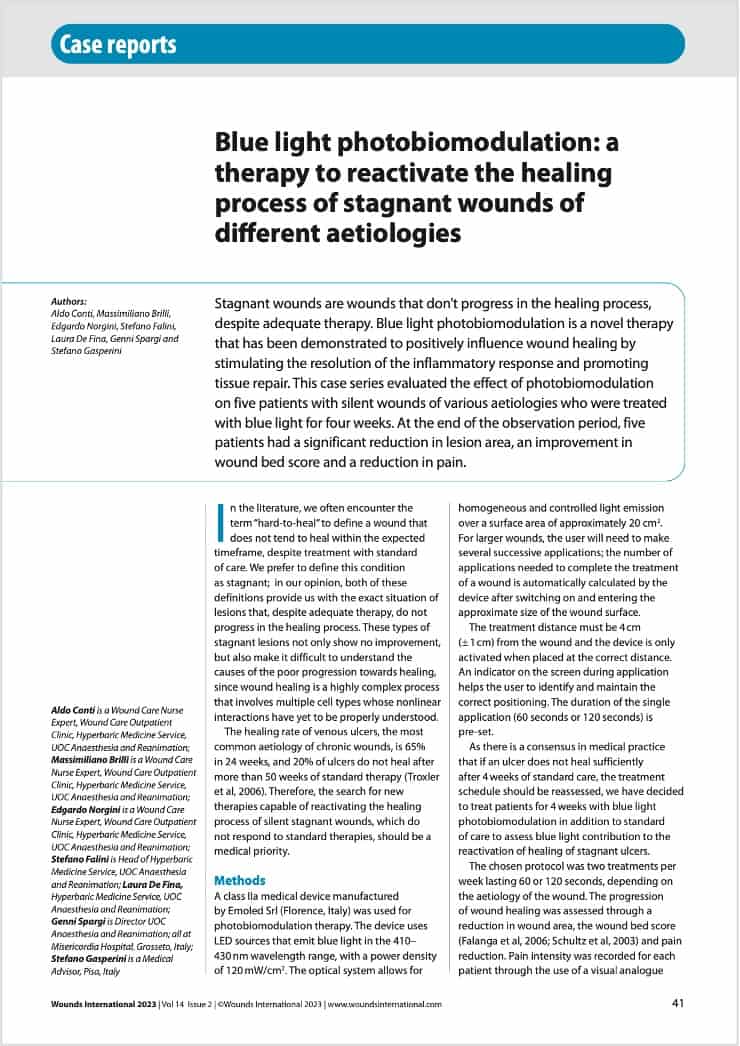
Blue Light to reactivate the healing process of stagnant wounds
Authors: Conti A, Brilli M, Norgini E, Falini S, De Fina L, Spargi G, Gasperini S
Title: Blue light photobiomodulation: a therapy to reactivate the healing process of stagnant wounds of different aetiologies
Year: 2023
Publication: Wounds International | Vol.14 | Issue 2| pages 41-45, https://rb.gy/tymha
SUMMARY
A stagnant or hard-to-heal wound does not tend to heal within the expected timeframe, despite treatment with standard of care. These “stagnant” lesions not only show no improvement, but also make it difficult to understand the causes of the poor progression towards healing, since wound healing is a highly complex process that involves multiple cell types whose nonlinear interactions have yet to be properly understood.
5 patients with ulcers of different aetiologies in the lower limbs have been treated for four weeks with blue light in addition to standard of care to assess the contribution of photobiomodulation to the reactivation of the healing process of stagnant ulcers.
The chosen protocol was two treatments per week lasting 60 or 120 seconds, depending on the aetiology of the wound. The progression of wound healing was assessed through a reduction in wound area, the wound bed score and pain reduction. Pain intensity was recorded for each patient using a visual analogue scale (VAS).
All the five patients had already undergone various therapies and showed no signs of improvement.
At the end of 4 weeks, all five patients experienced a significant reduction in lesion area (57.63% on average). At the time of enrolment, wound bed score ranged between 4 and 7 (mean 5.4), and at the end of therapy it ranged between 10 and 16 (mean 13.2), showing an important improvement. The trend in pain relief confirms the positive impact of treatment, varying between 0 and 9 (mean 5.4) at the time of enrolment and between 0 and 5 (mean 2.4) at the end of therapy.
According to the Authors, in these patients, the reduction/resolution of the inflammatory phase was manifested by the progression of the wound borders, the reduction of perilesional hyperemia and the reduction of pain. Despite having different underlying pathophysiologies, all five ulcers responded to the blue light Photobiomodulation therapy, demonstrating that all ulcers have a final common pathway, which results in behaviors that are similar.

